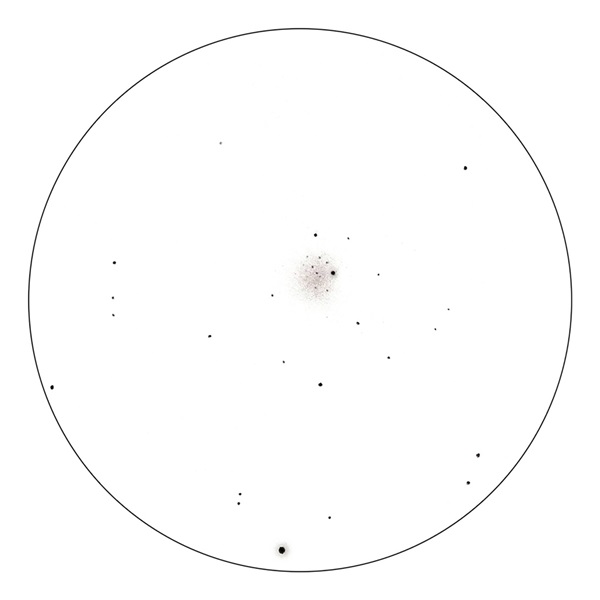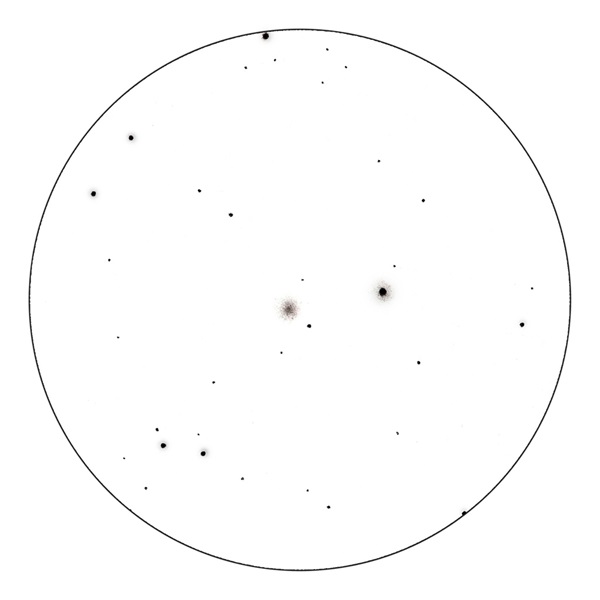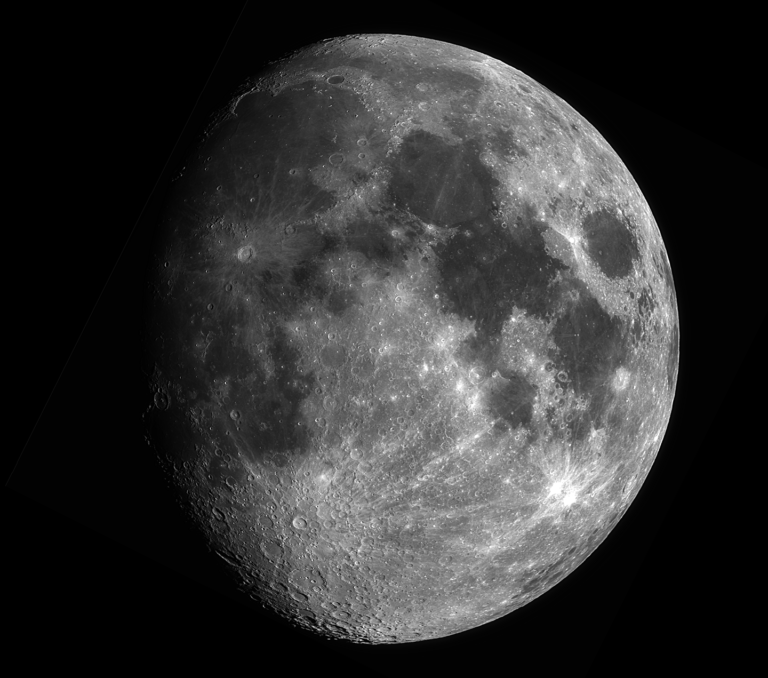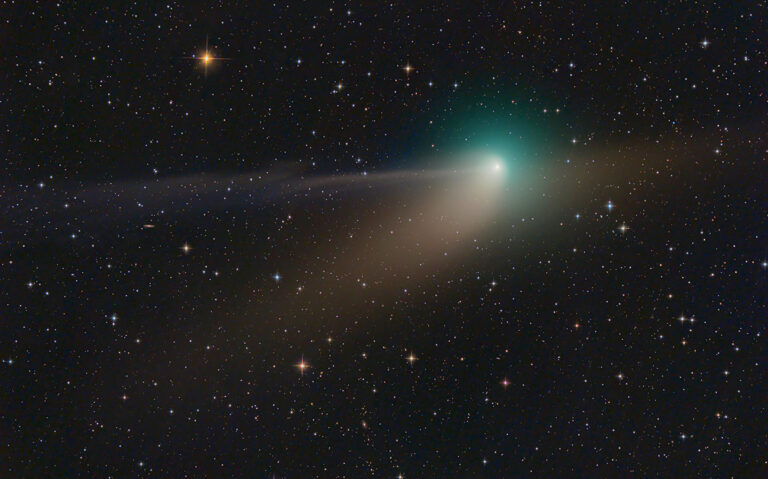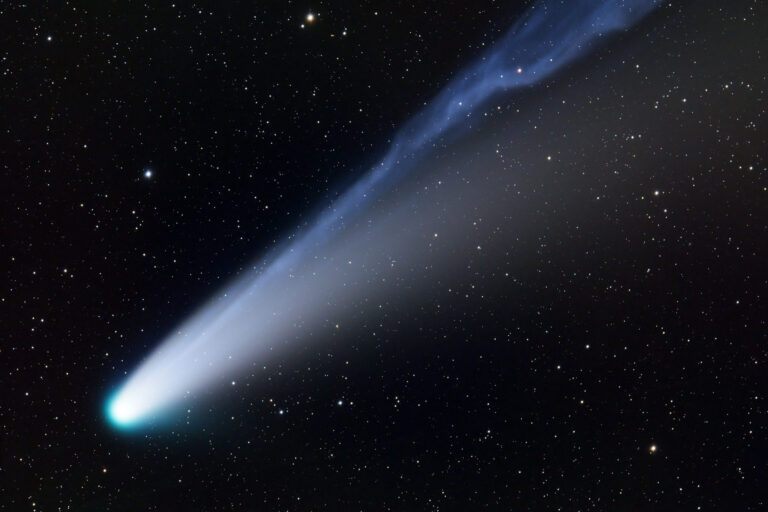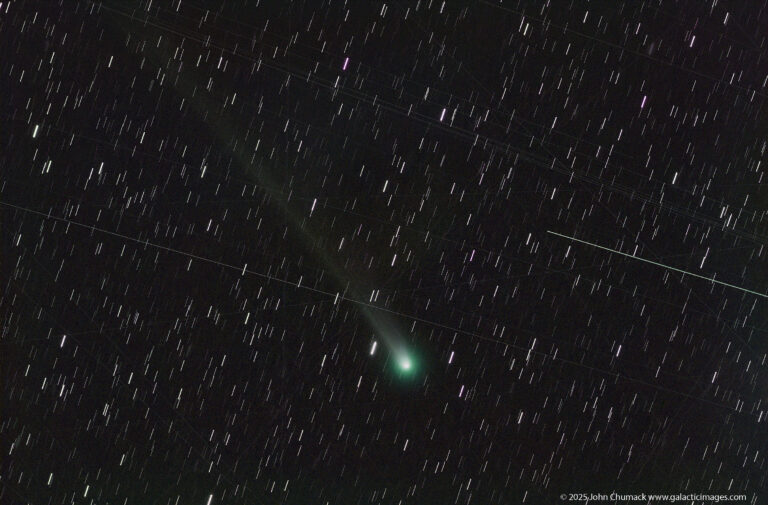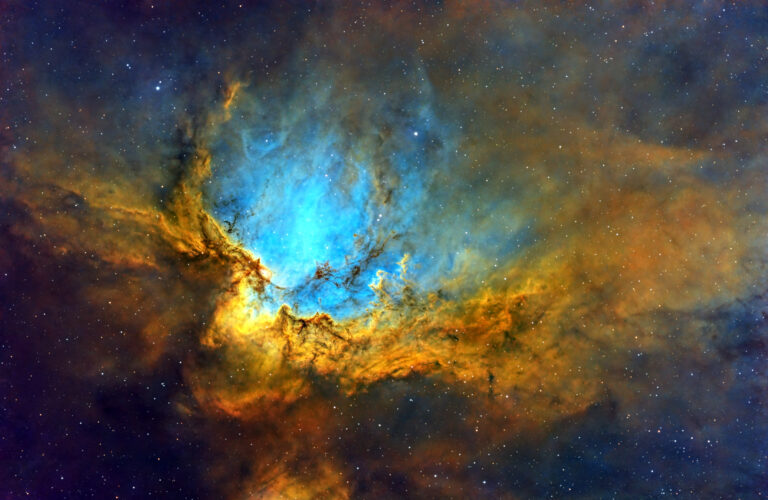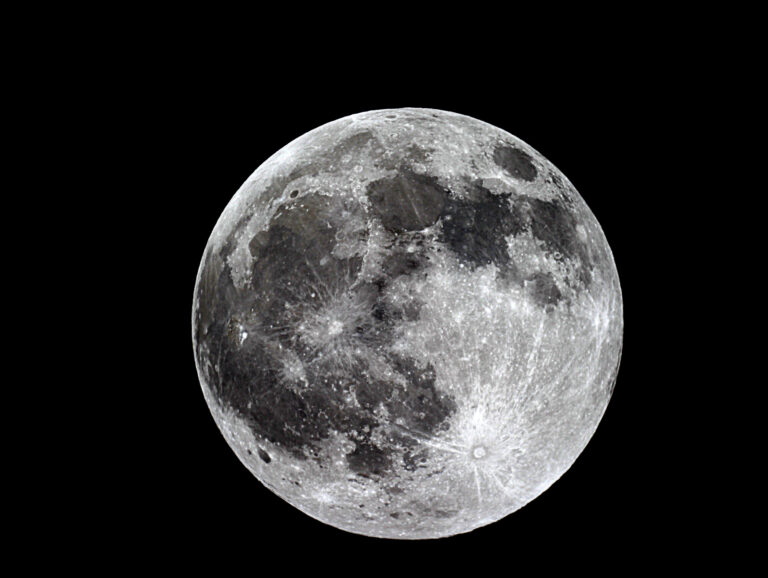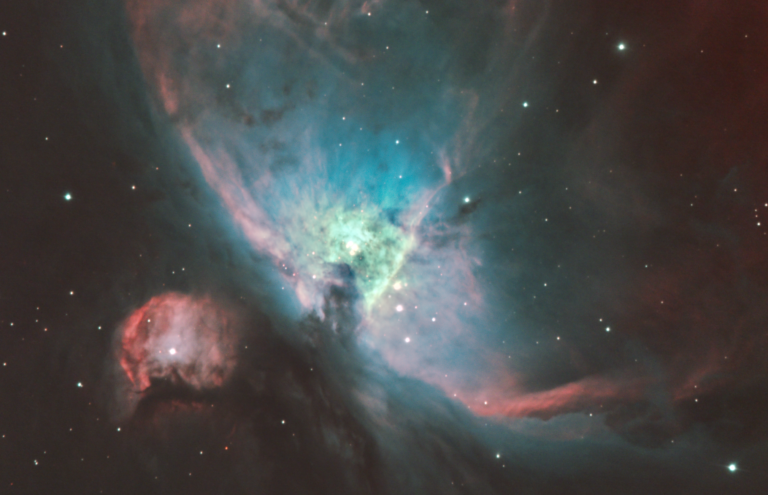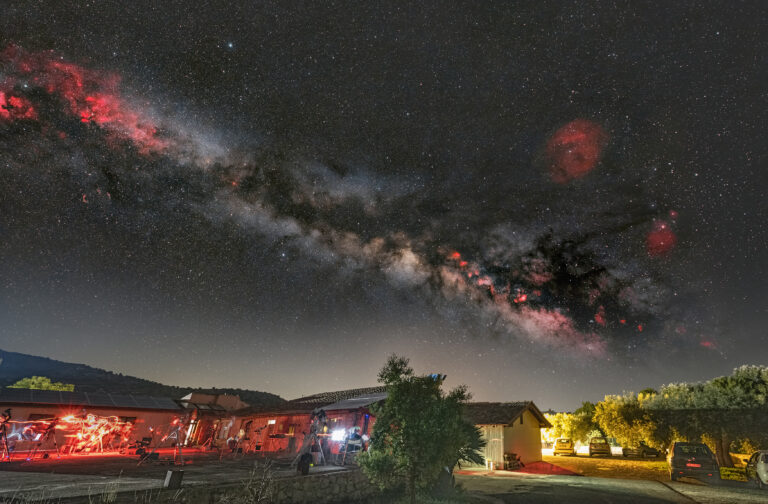Key Takeaways:
Red supergiant Antares shines brilliantly at 1st magnitude near the head of the scorpion. Lying low in the sky, the star provides a distinct marker to pinpoint the location of NGC 6144. The 9th-magnitude globular lies just 38′ farther northwest, reaching 9′ across with a low surface brightness. If you find NGC 6144 elusive, nudge your telescope northwest until Antares is just out of view to minimize the star’s glare and make NGC 6144 pop out.
When I observed it with a 4-inch scope at 125x, the globular cluster appeared as a dim glow with a 12th-magnitude star on its western edge. When I used averted vision, half a dozen faint stars flickered in and out of view across its face with hints of granulation. An 8th-magnitude star floated 14′ to the south near the edge of my field of view. Depending on your latitude, larger telescopes may reveal nearly a dozen resolved stars against the cluster’s hazy backdrop.
Trailing behind the scorpion’s tail, 3rd-magnitude G Scorpii makes a striking pair with the second globular cluster, NGC 6441. (Note the subtle naming distinction from the previous cluster!) Located a mere 4′ east of its neighboring orange-colored star, the cluster shines brightly at magnitude 7.2 and reaches 7.8′ in diameter.
Even through a 4-inch telescope, NGC 6441 was an easy catch 2.5° south-southwest of naked-eye open cluster M7, also known as Ptolemy’s Cluster. At 125x, a soft 1′ halo surrounded its bright, concentrated core. The halo extended nearly a degree when I moved G Scorpii just outside the field of view. A 10th-magnitude star was visible 1.5′ southwest from its center. Through a 10-inch scope, the globular takes on a mottled, slightly irregular shape, with the halo reaching 3′ in diameter.
The purpose of my sketch was to capture both objects as they appeared together with their bright neighbor stars. But another option is to include any additional details of NGC 6441 once G Scorpii is hidden from sight. Whichever method you choose, be sure to note the view your sketch represents.
Questions or suggestions? Feel free to contact me at erikarix1@gmail.com.


